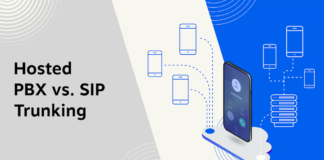
Any pharmacy is a complex commercial enterprise, the key feature of which is the product itself. Pharmacies and pharmacy warehouses have to work with a huge range of products: drugs arrive in different dosages and dosage forms, differences in price offers from different distributors and manufacturers, the need to monitor and reevaluate stock balances, etc., as in any large retail business, but in addition, there is state control over pricing and specific models peculiar to the pharmaceutical business – all these processes can and should be automated. Implementing pharmacy management software development can be a game-changer for these intricate processes.
Problems to be solved by a pharmacy automation program

Comprehensive programs for pharmacy and pharmacy chain automation usually consist of separate modules, each of which is responsible for automating certain tasks or processes of pharmacies and pharmacy chains.
Here are the things you will definitely have to deal with when automating pharmaceuticals:
- ATC (Anatomical Therapeutic Chemical) or ATC (from Anatomical Therapeutic Chemical) classification and drug selection by symptom/disease. It is necessary to maintain compliance with this classification. At the same time, the end user does not search by ATX/ATC criteria – he/she searches by symptoms or diseases. Accordingly, the system should allow 2-3-4 trees of categories (classification systems) in parallel so that it would be convenient to search for the desired drug or product.
- Pricing. There are goods that are sold according to different pricing models: some are discounted, some are subject to state regulation and cannot be sold at prices “more expensive than” or “the markup is not higher than X%.” There are also products that are sold under “manufacturer-sponsored discount” models, where the difference between the retail and economically justified price is covered by the supplier.
- Depending on the stage of the pharmacy’s life cycle, you also need to manage your pricing policy. If the pharmacy is just opening – it has more stock. If there is a strong competitor near the pharmacy – the same.
- Thus, pricing for a pharmacy chain is not an easy task, and the pharmacy business automation system should enable you to manage pricing models, provide analytics on the effectiveness of individual models and product categories, and – highly desirable – see profitability/profitability forecasts before revaluation.
- Accounting and recalculation of price on the fly. Different models of accounting and recalculation are used in pharmacy chains. These include batch accounting, scheduled recalculation, and recalculation upon the occurrence of external events (change in the dollar exchange rate, change in regulatory norms, etc.) and expiration of goods. Accordingly, accounting, re-evaluation of balances, dynamic pricing, prompt additional ordering of goods, and transportation logistics both within the network and from suppliers should be taken into account.
- Loyalty programs and promotions. Pharmacies are increasingly moving to discount and bonus programs with personalized conditions for each customer based on their past purchases, probable diagnoses, etc. It is convenient for the customer to receive personalized offers on products they consume frequently or regularly. It is beneficial for the pharmacy to make promotional packages that will be beneficial to customers while helping to sell the items that need to be sold.
Source: evoucher.pk - Open APIs and security. A modern system, on the one hand, should be completely open to API integration. For example, an insurance company should be able to place an order via API rather than calling a pharmacy chain’s call center. On the other hand, data security and the safety of operations are important.
- Offline operation of systems. Despite the fact that 4G (LTE) and 5G networks are changing the opportunities for network access, the problem of offline operation is still relevant. Your key operations: work with the cash register loyalty program work – should not depend on network access, operations should be performed even in the absence of signal, and synchronization should take place at the moment when the connection is restored.
- Built-in system of ordering to suppliers. It is important for the pharmacy to be able to quickly receive price lists and form orders based on the optimal price. Pharmaceutical order automation tools allow the selection of suppliers according to specified criteria, usually the minimum price.
- Integration with pharmacy aggregators. Such services allow customers to find medicines in the nearest pharmacies, order them online, check availability or contact pharmacies, and arrange delivery. You can not only place your price lists and product offers but also monitor the activity of competitors.
- Support of cash register equipment. Ability to connect and work with cash and fiscal equipment: barcode scanners, label printers, registrars of settlement operations, POS systems, etc.
- Internet pharmacy. It is important not only to create a pharmacy website but also to work out all necessary integrations with existing accounting and automation systems for timely automatic data updates and connect CMS or ERP systems. All components must be compatible.

Why automation?
The modern pharmaceutical market is developing so rapidly that what was considered a breakthrough just a few years ago has now become a standard.
Automation of the pharmaceutical industry helps companies establish production and sales, manage product quality, establish communications with pharmacy chains and individual sales representatives, avoid “gray” and non-transparent schemes in the market, and much more. Programs for pharmaceutical automation are developed taking into account the specific tasks and processes of this niche: CRM systems for pharmaceutical companies, hospital sales management systems, ERP systems, document management systems, etc. CRM for pharmaceutical companies, in particular, allows one to collect in one interface all the necessary management tools, as well as analytics and databases on doctors of medical and preventive institutions and pharmacies.
At the level of pharmacies and pharmacy chains, automation programs help to improve efficiency, speed, and quality of customer service, manage branches, organize employee communication, training, etc. Comprehensive automation of pharmacies allows you to work with stock, have access to drug registers, organize accounting, establish communication with customers, manage advertising campaigns and loyalty programs, etc. This also includes automation of cash register workstations in pharmacies, self-service systems, labeling of drugs in in-house production, automation of accounting of goods movement in the pharmacy, and much more.

Off-the-shelf software or custom pharmacy automation program development?
Will the finished software fully meet your wishes? Probably. But what if, at some point, your requirements start to go beyond one system? Or have you become interested in, for example, how to create your own online pharmacy as a compatible addition to the existing software, and such functionality was not originally even in the developers’ plans?
Ready-made systems are likely to hold you back and slow you down. In case of rework, there is a risk that, over time, your system will resemble a patchwork quilt or will start to “fall apart,” threatening you with data loss if you have already “outgrown” it. Any revisions are changes within the framework of already written functionality, which is always expensive and not always effective.
If you want to do something breakthrough, it is better to bet on your own system right away – trust the development of a custom solution. Moreover, an experienced developer not only knows the peculiarities of his software thoroughly but also takes responsibility for the quality of not only the product but also its implementation and support, which is the advantage of turnkey solutions.







